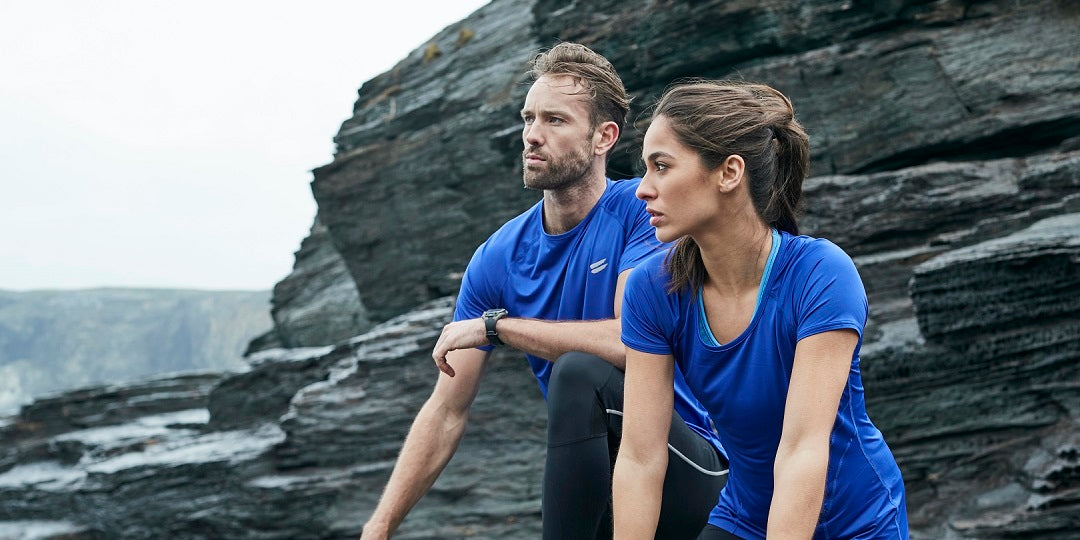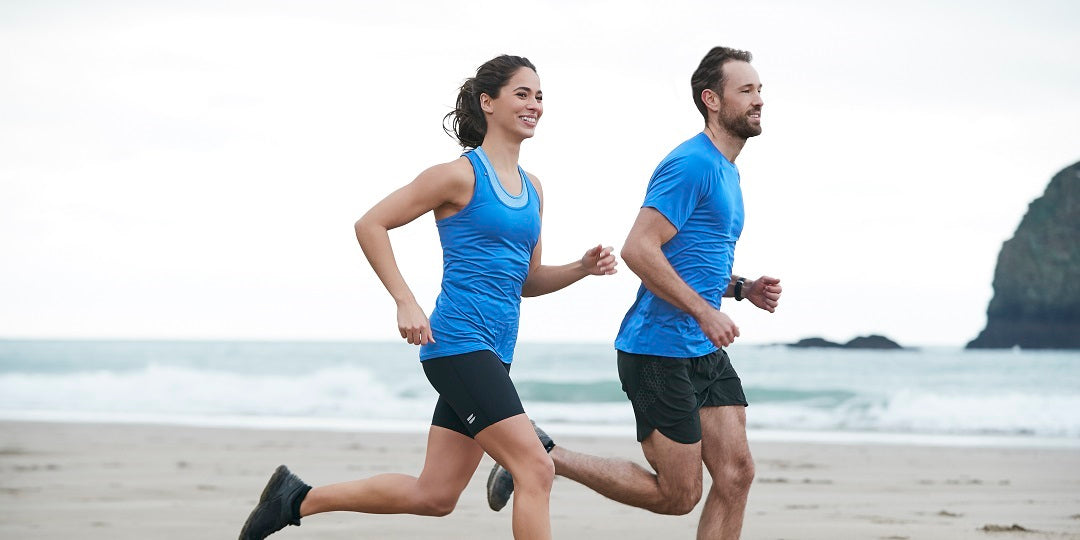I use bodyweight squats every single day. Training days, rest days, during warm-ups, as part of metabolic conditioning circuits…I use them all the time!
As a strength and conditioning coach, I recognize and appreciate the benefits bodyweight squats have to offer and incorporate them into many of my client programs ranging from average fitness enthusiasts to elite level athletes.
Based on the above, we can safely assume that bodyweight squats are indeed “effective.” However…what are they “effective” at doing? What do bodyweight squats do and what goals can they help us achieve?
This article will answer the aforementioned questions through examining both the positive and negative aspects of bodyweight squats. After reading this piece you will fully understand the pros & cons of bodyweight squats, how to incorporate them into your individual training program, and what you need to do to reach your ultimate goals.
Sound good?
Ready to dig in?
Let’s get started!
Benefits
Bodyweight squats provide numerous benefits and - in my opinion - should be incorporated in most (if not all) training programs. To illustrate why, below I’ve listed a few notable benefits bodyweight squats have to offer:
-
They’re a Great Teaching Tool
Simple though it may seem, learning and internalizing correct squat form can be extremely challenging. Through starting with bodyweight squats, we can engrain the proper mechanics of the movement and instill the importance of correct technique prior to handling external loads.
-
They’re Fantastic for Increasing Body Temperature
In other words, they serve as a great tool for warming up. A complex, multi-joint movement, squats recruit a large amount of muscle and quickly prime your body to workout. Plus, if you plan on Squatting during the training session, it’s smart to “grease the groove” and practice the movement prior to handling weight.
-
They’re an Effective Low Impact Conditioning Drill
Bodyweight squats are an extraordinary tool to use as part of metabolic conditioning circuits. Performed and programmed correctly, they recruit a huge amount of muscle and burn a ton of calories. Not to mention, they’re a fantastic low-impact drill that can be incorporated across a variety of populations.
-
They’re a Useful Assessment Tool
For coaches and experienced fitness enthusiasts, bodyweight squats serve as a valid assessment tool to use prior to strength training. Through analyzing an individual’s bodyweight squat, a qualified coach can identify various asymmetries and faulty movement patterns to address within the training program.
-
They Can Be Performed Anywhere
No matter where you are in the world, or what equipment you have access to, you can always perform bodyweight squats.
Clearly bodyweight squats provide numerous benefits and have a time and a place within a well-designed training program.
However, they also have one major drawback which needs to be addressed....
They Provide ZERO Room for Improvement!
None!
Nada!
Zilch!
Despite the benefits listed above, bodyweight squats provide absolutely ZERO room for improvement! While they’re certainly valid at the beginning stages of training, soon afterwards (think 1-3 weeks) they will cease to challenge your body and won’t provide a sufficient stimulus for adaptation to occur.
Sure you can include them as part of your warm-up or in metabolic conditioning circuits…but if you want to get stronger and/or improve body composition bodyweight squats will not suffice!
To understand why we can’t perform bodyweight squats for years on end and expect to make progress, it’s necessary to discuss progressive overload and its role in improving strength and body composition.
[NERD ALERT!] I’m about to geek out and dig into the current science-related research so bare with me for just a few moments.
The goal of a training program is [obviously] to improve some (or multiple) components of fitness.
But how do we ensure that we improve?
Simple!
In order for improvements to occur the body must be forced to adapt to the stimuli (re: training) placed upon it.
That much is obvious. We all learned about adaptation in grade school.
The catch, however, is that adaptation can only transpire by gradually increasing the demands placed upon the body through a principle known as progressive overload.
Progressive overload, according to Kraemer et al., can be defined as “the gradual increase of stress placed upon the body during exercise training.” This “gradual increase” can be achieved in a variety of ways including, but not limited to:
- Increasing the load/weight/resistance used
- Increasing repetitions to the current load
- Increasing range of motion (ROM) with the current load
- Decreasing rest periods with the current load
Simply put, if we want to make continued progress then we need to do “more” over time.
We can lift more weight, perform more repetitions, increase the range of motion, decrease the rest periods...the possibilities are endless and there’s rarely a “right” or “wrong” way to do it. Rather, as long as you gradually increase the demands of your training program you will continue to make progress.
It’s really as simple as that.
Applying this knowledge to bodyweight squats, it’s reasonable to conclude that - while they may initially produce a training effect - over a long period of time they will cease to provide any meaningful results.
If Not Bodyweight Squats…Then What?
If you’ve been banking on bodyweight squats for incredible results, odds are you’re probably a little lost right now. You might even be wondering:
- What should I do now?
- What’s the best exercise to help me achieve my goals?
- Should I never perform bodyweight squats again?
Don’t worry, I’ve got you covered.
In the remainder of this article I’ll provide a list of exercises (ordered from least to most challenging) designed to help you increase strength, performance, and body composition.
Effective Squat Variations
There are countless - and I mean countless - squat variations to include within your training program. None of them are inherently better or worse than the rest, rather they’re all valid alternatives assuming they’re programmed appropriately for your individual needs and goals.
To give you some ideas, below I’ve provided a brief list of my personal favorite squat progressions listed in order of least to most challenging:
1. Kettlebell Goblet Squats
2 .Barbell Box Squats
3. Barbell Back Squats
4. Barbell Front Squats
5. Dumbbell Lunges
6. Dumbbell Bulgarian Split Squats
When incorporating these squat variations into your training programs, remember that progressive overload requires gradually increased demands. In other words, you don’t need to change things every single workout or even every week.
Work on a specific movement for 3-6 weeks, perfect it, and then move on to something else. There’s no need to rush to include all of the above-listed squat variations at the exact same time.
A gradual increase in demands is all we need.
Wrapping Up
The point of this article was not to turn you against bodyweight squats or give off the impression that they’re useless. Remember, I use bodyweight squats Every. Single. Day! As I said at the very beginning, bodyweight squats can be advantageous in numerous situations such as warming up, metabolic conditioning circuits, and learning proper squat mechanics.
Bodyweight squats are NOT useless!
That being said, over an extended period of time they will not help you improve strength or body composition. If you truly want to make progress then you need to incorporate the principles of progressive overload and gradually increase the demands placed upon your body.
Does this mean you need to give up bodyweight squats altogether?
Of course not!
All it means is that, in addition to bodyweight squats, you need to start lifting progressively heavier weight. I don’t care if you’re a man or woman, athlete or fitness enthusiast.
Start lifting heavy!
You don’t need to worry because you won’t turn into a bodybuilder and you won’t turn into a Powerlifter.
In all honesty, you’ll just start looking, feeling, and moving better. Your strength will increase, body fat will decrease, and your confidence will blow through the roof. Now lifting heavy doesn’t sound so bad, does it?
Never Minimal. Never Maximal. Always Optimal.







Leave a comment (all fields required)